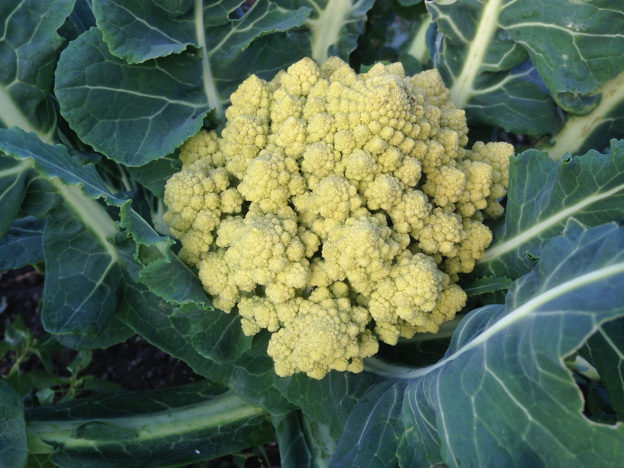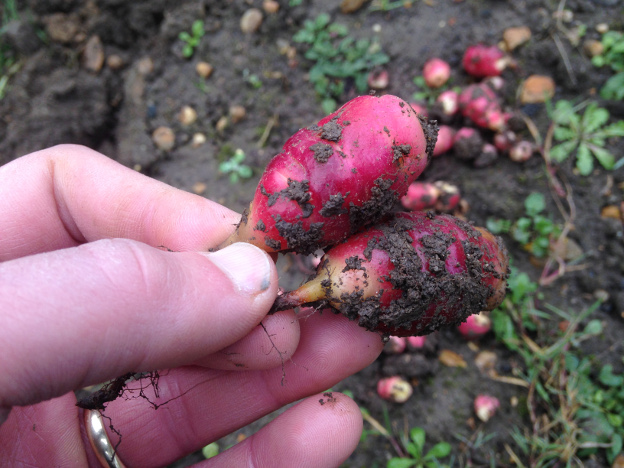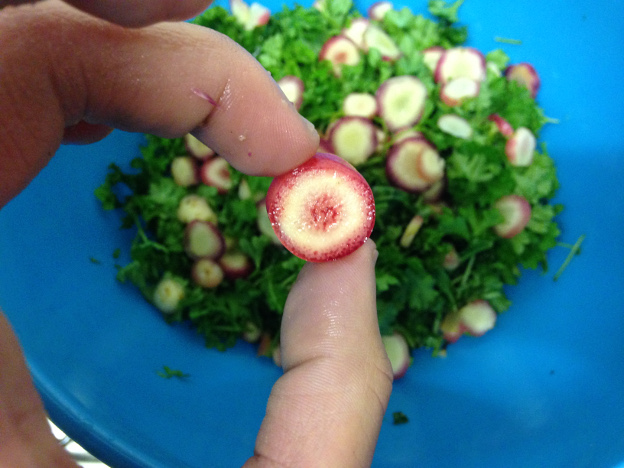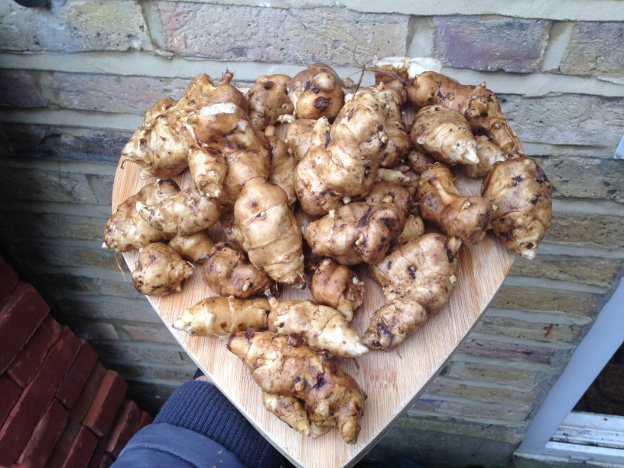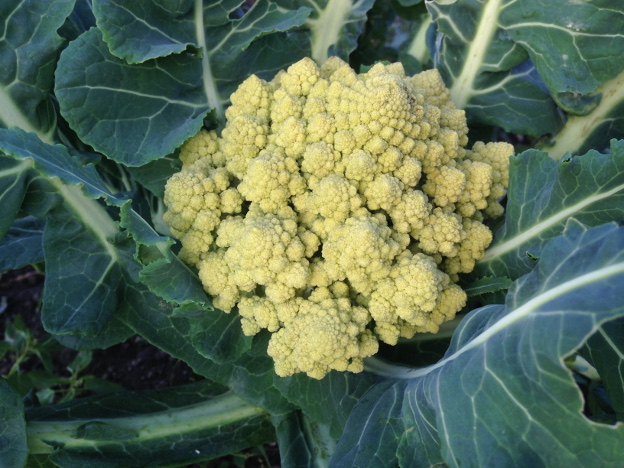February has been a busy month for us. We’ve been enjoying our crops from our garden and allotment, and busy planning for the coming months. Regular readers will have noticed that there were no growing updates for the months of December and January. In truth there wasn’t a great deal to write about. We were rather busy every weekend over the festive period, and with the days so short at that time of year, getting outside and cultivating before or after work didn’t seem like it would be a practical option.
In short we spent very little time in the garden and even less at the allotment. We had several rather hard frosts and there was little to do outside apart from some harvesting. So for the most part we stayed indoors until the weather warmed up.
But warm up it did. The days are also getting longer and February has been a far more productive month for us. We are still harvesting and enjoying our crops. Leeks, brassicas and carrots have been on the menu most days. We’ve also been getting some of the winter jobs done, such as repotting and pruning our fruit trees and bushes.
But back to December and January for a paragraph or two just to update you on what little we did achieve during those months. On the evening of the first of December we harvested the last of our medlars from our small tree on the patio. It was a little late in the year to be harvesting them, and they were well and truly bletted. But it didn’t matter as we had no intentions of storing them and devoured them all promptly. Given the diminutive size of the tree, we had a reasonable harvest this year and we thoroughly enjoyed them.

Some medlars from our potted patio tree. There were actually a few more than this, but not all survived long enough to be photographed!
We’ve never seen medlars for sale other than in the form of medlar jelly or medlar ‘cheese’, and so we have never bought them. We’ve harvested them from our local community garden in the past, but we didn’t do so in 2016. So we can honestly say that in 2016 we were entirely self-sufficient in medlars!
As December turned into January we were still harvesting carrots, leeks and brassicas. We’ve had good yields of broccoli and calabrese this growing year. Most of the leeks are a bit smaller than we had hoped, but still perfectly edible. The kids have particularly enjoyed the carrots.
By late December we still had a row each of yellow and red carrots at the allotment. I have particularly enjoyed the yellow ones. The variety is called ‘Jaune du Doubs’ and it is apparently a heritage French variety from the 19th century. I’ll probably write a post on them at some point in the future.
These colourful carrots have contributed to some colourful dinners. This has really appealed to our children who have been enjoying wrapping up for our weekend trips to the allotment followed by a multi-coloured feast upon our return. It’s been a great way to get our children to enjoy their veg. And it’s not just any old veg. It’s organic veg that has been harvested just minutes before it is eaten.
So then on to February. Back at the start of the month we harvested our ocas. This was the first time we had grown them and we were very excited. Ocas are versatile South American tubers that can be eaten raw, or treated like potatoes and boiled, mashed, roasted or baked. They are also blight resistant and the variety we had were very colourful.
We sowed them back in June and they very quickly developed luscious tops and looked very vibrant and healthy up until we started experiencing frosts. We also had some snow that settled, and after this the tops vanished. The growing instructions stated that after this happens the tubers can still grow for a couple of weeks. So we waited. The growing instructions said that in the UK climate the tubers only start to form as of mid-November. So we were reluctant to harvest them in early January. But we knew they would suffer in the frosts. So in early February when the ground was thoroughly thawed we harvested them, but found them to be quite small.
I suspect this was a result of the weather. In our area of East Anglia we have had very mild winters for the last few years, so we weren’t anticipating heavy frosts when we sowed our ocas back in the summer. My first thoughts were that we should have left them a little longer. But a few of the tubers were partially rotted, so I don’t regret harvesting them when we did. I think we were just unlucky with the weather.
They were beautiful to harvest. We grew a variety that were a vibrant red colour and provided a very striking contrast against the soil. I’d dig the fork in and turn the soil, sometimes to reveal just soil, but others to reveal soil and vibrant red tubers, like so many jewels buried beneath the surface.
As we had a rather small crop we decided to eat the lot, rather than save any to grow for next year. We were also a little disappointed with the harvest, so our initial instinct was that we probably wouldn’t bother with them again next year. We served our ocas raw, thinly sliced in a winter salad with kale, toasted chopped almonds, some fresh parsley, a little lemon juice and a drizzle of olive oil. It made for a delicious meal with a fantastic contrast of textures.
We tried some of the oca raw before it came into contact with the other ingredients and we didn’t really get much of the hint of lemon flavour that we’d read about. Maybe this was a result of the poor growing conditions. We rather enjoyed our meal and afterwards discussed how unfortunate it was that we wouldn’t get to try them roasted or boiled or baked. And so we decided to order some more tubers and give them another go after all.
Our other crop of lesser grown tubers, our Jerusalem artichokes, didn’t let us down. I often think Jerusalem artichokes don’t get the credit they deserve. Plant a few tubers in the ground and forget about them for a few months and they will reward you with a very low maintenance crop of tubers for years to come.
Early in the month I turned the soil where about three of the large tops had been growing and lifted an impressive 1.3kg of tubers. We have since harvested at least as much again, and I expect there is still as much out there waiting to be harvested. If we don’t get them out in the next few weeks then we’ll just get an even larger crop next time round. What’s not to like?
I’ve already mentioned our brassica harvesting. But I’d like to elaborate on this a little. This has been the best year we’ve ever had for brassicas. I wish we’d sown more now, but our acquisition of the allotment last summer meant that we only really had the few plants that we’d sown for our garden, and we spread them between the two sites. Next growing season we will be better prepared.
We have grown a decent quantity of purple sprouting broccoli. Between the allotment and the garden we have been self-sufficient in broccoli this month. First we harvested the central spears of the plants at the allotment, then we harvested those in the garden. Within a few days the plants at the allotment had formed new sideshoots, which we harvested, and we are now doing the same with the plants in our garden. It’s kind of like ‘cut and come again’ broccoli, with enough plants that we are in constant supply.
The romanesco in the following photograph was also grown in our brassica bed at the allotment. This is certainly the most succesful year we’ve ever had for brassicas.
This month we also harvested our celeriacs. Last summer I was quite excited about about our celeriac crop, as we’d planted so many that I felt sure we would be in for a good harvest. Fast forward a few months and we certainly harvested a lot of them. But they were disappointingly small. Most were only around the size of a golf ball.
Our initial feelings were much the same as when we harvested the ocas, something along the lines of ‘we don’t bother with these again this year’. But then we ate them. Their size meant that preparing them was rather time consuming, but we peeled them and made some celeriac mash which we bulked out with a couple of potatoes. Just one mouthful practically had me rushing for the seed packet in preparation for next winter’s harvest!
In summary, February has been a very enjoyable month for us. We’ve been enjoying our regular harvests and we are full of excitement for the coming growing season. This year we have the garden and the allotment to plan, and we are now busily sourcing seeds and tubers. We’ve sown a quite a few things already, we have potatoes chitting and with the days getting longer it feels like spring is just round the corner, even if the thermometer often tells a different story. Be sure to check back soon for more updates.


